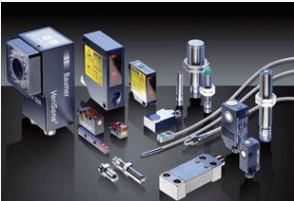What is the sensor classification and application principle?
Sensors are an important technical foundation for the new technological revolution and the information society, and are an extremely important high-tech in the world today. Almost all modern instruments and equipment cannot be separated from sensors. It is a modern sensor technology that is booming, and it is a comprehensive synthesis of a variety of disciplines including micromechanics and microelectronics technology, computer technology, signal processing technology, circuits and systems, sensing technology, neural network technology, and fuzzy control theory. Technology, and this technology is also widely used in military, space exploration, smart home, agriculture, medical and other fields.

Definition of sensor:
"A device or device that can feel the specified measured and converted into a usable signal according to a certain rule, usually consists of sensitive elements and conversion elements." A sensor is a detection device that can sense the measured information, and can transform the sensed information into electrical signals or other required forms of information output according to a certain rule to meet the information transmission, processing, storage, Display, record and control requirements. It is the primary link to achieve automatic detection and automatic control.
Classification of sensors:
There are many classification methods for sensors, but there are two commonly used classification methods. One is to divide according to the measured physical quantity; the other is to divide according to the working principle of the sensor.
According to the measured physical quantity, the common sensors are: temperature sensor, humidity sensor, pressure sensor, displacement sensor, flow sensor, liquid level sensor, force sensor, acceleration sensor, torque sensor, etc.
It can be divided into:
1. Electrical sensor
Electrical sensor is a kind of sensor with a wide range of applications in non-electrical electrical measurement technology. Resistive sensors, capacitive sensors, inductive sensors, magnetoelectric sensors and eddy current sensors are commonly used.
Resistive sensors are made by using a varistor to convert the non-electrical quantity to be measured into a resistive signal. Resistive sensors generally include potentiometer, contact variable resistance, resistance strain gauge and piezoresistive sensors. Resistive sensors are mainly used for the measurement of parameters such as displacement, pressure, force, strain, torque, air flow velocity, liquid level and liquid flow.
Capacitive sensors are manufactured using the principle of changing the geometric size of a capacitor or changing the nature and content of a medium, thereby changing the capacitance. It is mainly used for the measurement of parameters such as pressure, displacement, liquid level, thickness, and moisture content.
The inductive sensor is made by changing the inductance of the magnetic circuit geometry and the position of the magnet to change the inductance or the principle of piezomagnetic effect. It is mainly used for the measurement of displacement, pressure, force, vibration, acceleration and other parameters.
The magnetoelectric sensor is made by converting the non-electrical quantity to the electric quantity using the principle of electromagnetic induction. It is mainly used for the measurement of parameters such as flow, speed and displacement.
The eddy current sensor is made by the principle that gold chips move in a magnetic field to cut magnetic lines of force, forming eddy currents in the metal. It is mainly used for measuring parameters such as displacement and thickness.
Magnetic sensors are made of some physical effects of ferromagnetic materials, and are mainly used for measuring parameters such as displacement and torque.
3. Photoelectric sensor
The photoelectric sensor occupies an important position in non-electricity electrical measurement and automatic control technology. It is made by using the photoelectric effect and optical principle of the photoelectric device, and is mainly used for the measurement of parameters such as light intensity, luminous flux, displacement, and concentration.
4. Potential sensor
Potential sensors are made using the principles of thermoelectric effect, photoelectric effect, Hall effect, etc., and are mainly used to measure parameters such as temperature, magnetic flux, current, speed, light intensity, and heat radiation.
5. Charge sensor
Charge sensors are made using the principle of piezoelectric effect, and are mainly used for measuring force and acceleration.
Semiconductor sensors are made using the principles of semiconductor piezoresistive effect, internal photoelectric effect, magnetoelectric effect, and material changes caused by semiconductor and gas contact. They are mainly used for the measurement of temperature, humidity, pressure, acceleration, magnetic fields and harmful gases.
7. Resonant sensor
Resonant sensors are made using the principle of changing the inherent parameters of electricity or machinery to change the resonance frequency, and are mainly used to measure pressure.
8. Electrochemical sensor
Electrochemical sensors are made on the basis of ion conductivity. According to the formation of their electrical characteristics, electrochemical sensors can be divided into potential sensors, conductivity sensors, electric capacity sensors, polarographic sensors, and electrolytic sensors. Electrochemical sensors are mainly used to measure parameters such as gas, liquid or solid components dissolved in liquid, liquid pH, conductivity and redox potential.
In addition, according to the detection and conversion process of the signal by the sensor, the sensor can be divided into two categories: a direct conversion type sensor and an indirect conversion type sensor. The former is to convert non-electricity input to the sensor into electrical signal output at one time. For example, when the photoresistor is exposed to light, the resistance value will change, and the optical signal will be directly converted into an electrical signal output. The latter will be input to the sensor. The non-electricity of the first is converted into another non-electricity, and then converted into an electrical signal output. For example, a pressure sensor made of a spring tube sensitive element belongs to this category. When pressure is applied to the spring tube, the spring tube deforms The sensor then converts the amount of deformation into an electrical signal output.
If you want to know more, our website has product specifications for the sensors, you can go to ALLICDATA ELECTRONICS LIMITED to get more information

